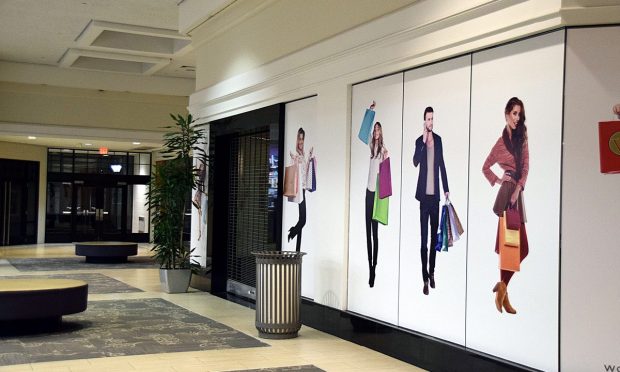After Brief Mid-Summer Surge, Weak And Stagnant Malls Threatened By Fresh Headwinds

As vaccination rates increase, socialization outside the home resumes and consumers work on their back-to-school shopping lists, experts have pointed to the shopping mall as a place that is distinctly benefitting from consumer demand.
While indoor malls saw a nearly 29 percent drop in visits this past February compared to the same period in 2019, according to foot traffic data from Placer.ai, consumers have been steadily returning as the year has progressed and COVID-19 concerns have lessened. In June, indoor malls saw only a 9.3 percent drop in visitors compared to 2019, and last month, visitor numbers were relatively even between 2019 and 2021.
But not every mall has had the same luck. Bankruptcies of JCPenney, Brooks Brothers, Neiman Marcus and others over the past year have left many boxes empty, and the accelerated rise of eCommerce has only made the decline of B and C malls, which produce fewer sales and likely have lower occupancy, more pronounced.
Some landlords have been repurposing empty Sears or JCPenney locations into vaccination sites, schools, medical facilities or corporate offices. Deborah Weinswig, founder and CEO of Coresight Research has also predicted the rise of “dark malls,” which exist solely to fulfill online orders for same-day or same-hour pickup.
Related: Simon Property CEO Says ‘The Mall Is Safe’ Amid Rising Concerns Over Delta Variant
David Simon, CEO of nationwide mall operator Simon Property Group, told investors and analysts during the company’s quarterly earnings call last month that even with the Delta variant causing pandemic anxiety to heighten once again, he’s confident that malls will be OK. Simon Property is also in the process of redeveloping some of its properties to incorporate more mixed-use spaces.
“The idea is to redevelop a lot of the old department store boxes that we got back or that we ended up buying,” Simon said. “The plans may be a little less grandiose, so to speak, but it’s very active on that front across the board.”
On The Record
“As the wider COVID recovery continues alongside increasing returns to cities for work, tourism and business travel, there is real reason for optimism in a wider mall resurgence. In fact, there is a real possibility that malls could be positioned for a uniquely exciting scenario in the coming months and years.”
—Ethan Chernofsky, vice president of marketing at Placer.ai“This mall story over the past 10 years has really been a story of the haves and the have-nots. Those top-level malls really have done well, whereas the B and C level malls was really a real estate story. In the 90s and the 2000s, there was so much investment in real estate that malls were built that really didn’t make sense long term.”
—Jared Blank, chief marketing officer at VTEX
Just Give Me A Reason
To be sure, Blank said the U.S. still has far more retail space per capita than most other countries, driven by the real estate boom of decades past. Because of this, as the recovery from the pandemic continues, Blank said it’s vital that retailers determine what they’re uniquely good at in order to attract customers.
“What we saw from the recession of 2008-2009 was the middle of the road retailers — Macy’s, JCPenney, Sears — customers did not find a reason to go there, because for each niche, another company had done it better,” he said.
Chernofsky told PYMNTS in an email, though, that the speed of recovery for malls “has been exceptionally impressive and indicates just how powerful the demand is for malls.” To continue this resurgence, he added, malls likely just need to continue focusing on creating new experiences and inviting environments for customers.
“There is real reason for optimism that top tier malls are entering into a period of unique strength,” Chernofsky said. “While many malls will need to reposition or reimagine themselves, many of the top players are taking the steps necessary to drive short- and long-term success.”